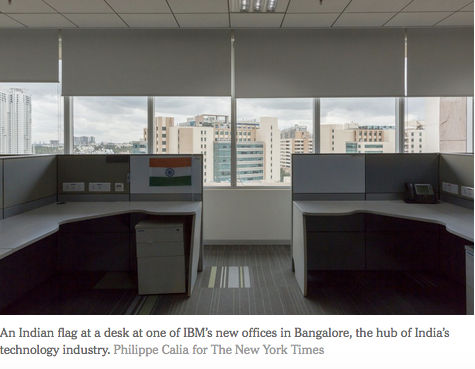BANGALORE, India — IBM dominated the early decades of computing with inventions like the mainframe and the floppy disk. Its offices and factories, stretching from upstate New York to Silicon Valley, were hubs of American innovation long before Microsoft or Google came along.
But over the last decade, IBM has shifted its center of gravity halfway around the world to India, making it a high-tech example of the globalization trends that the Trump administration has railed against.
Today, the company employs 130,000 people in India — about one-third of its total work force, and more than in any other country. Their work spans the entire gamut of IBM’s businesses, from managing the computing needs of global giants like AT&T and Shell to performing cutting-edge research in fields like visual search, artificial intelligence and computer vision for self-driving cars. One team is even working with the producers of Sesame Street to teach vocabulary to kindergartners in Atlanta.
“IBM India, in the truest sense, is a microcosm of the IBM company,” Vanitha Narayanan, chairman of the company’s Indian operations, said in an interview at IBM’s main campus in Bangalore, where the office towers are named after American golf courses like Peachtree and Pebble Beach.
The work in India has been vital to keeping down costs at IBM, which has posted 21 consecutive quarters of revenue declines as it has struggled to refashion its main business of supplying tech services to corporations and governments.




